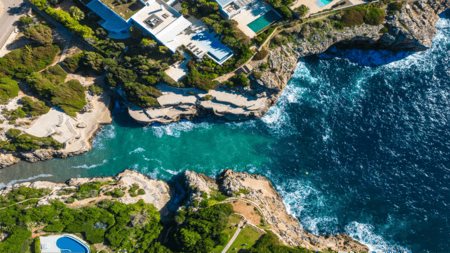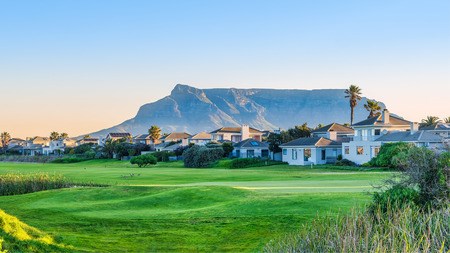 |
If ever there was a time to take advantage of the buy-to-let market in South Africa’s inner cities, now is the time. Or is it? We spoke to specialists this week and put this theory to them: South Africa’s inner cities are getting a major spit and polish ahead of the soccer extravaganza next year and some buy-to-let investors who bought in the boom times might be under pressure to off load these units. |
|
Beyond the capital appreciation of these small apartments (many in the inner city), their value increases because in a tough market few people can afford to buy and have to rent. Craig Turner is a director of Apartment Box which markets 370 units in Durban CBD. “Now is a good time to get involved in buy-to-let. You will be able to pick up decent opportunities and interest rates are decreasing which will push yields up. In the market right now CBD investment flats are well priced. “Some sellers are under pressure are still struggling and there is a lag effect in spite of the interest rate reductions. Some people are over-exposed when interest rates peak. They think they can hold on to their properties, but they will offload in the next nine months.” “In Johannesburg the presence of major Head Offices like that of the banks, Anglo, BHP Billiton and others and the investment in infrastructure by these large corporations is creating a very positive investor sentiment about the financial district. These and other head offices are here to stay. The have billions invested in the city and are now aggressively expanding on their investment with new parking garages being built and expanding infrastructure. In addition, government is also moving back into the city aggressively.” For Fourie, the appeal of inner city living also boils down to time saved. “No more sitting in the traffic for two hours in the morning and another two in the afternoon. That’s four hours per day, or twenty hours per week. And even in peak hour traffic, the airport is only 30 minutes away from the inner city. So there is a return to quality of life. In the city, you can walk everywhere. Safety cameras all over ensure that one is safe, as does the huge security and police presence here.” Sioux Driver, Director of Property Services Group, Pace Properties in Johannesburg agrees that today’s climate is perfect for inner city investors. “Purchase prices are affordable and rentals are yielding excellent returns of 12% per annum on purchases of R400 000 and less. Driver says Pace buyers can pick up deals on upmarket studio apartments ranging from R250 000 to R400 000 and one bedrooms from R350 000 to R500 000. “These apartments have been finished with quality fixtures and fittings as well as granite kitchens.” Looking at this urban market, Driver says that capital growth over the last year has slowed as a result of the increase in rates and the shrinking economy; however, with the 1.5% reduction in interest rates to date, and further expected cuts, the market is slowly starting to shift. “Prior to the recession in years leading up to end 2007, CBD investments were yielding as much as 35% capital growth from time of purchase off plan to the resale on transfer after 18 months of development.” Drivers’ advice for first-time inner-city investors is: “Always invest with a reputable company who has been involved in inner city rejuvenation projects. Make sure the developer has a good reputation and has built successful schemes in the past. Look for properties that are less than R500 000. These properties provide the best rental return and capital growth. It is extremely difficult to get R7500 rental per month on a property purchased at R750 000 in the CBD. However, rentals of between R3000 and R3500 per month are easily achieved and in enormous demand on studio and one bedroom apartments which cost between R250 000 and R350 000.” Her special tip is, “Buy on the upper floors of a building, preferably with a view. Try, if you are buying in Jozi city, to buy close to Park Station or the Gautrain. Driver reckons that first-time buyers wanting to secure their spot in the city could do so with as little as R15, 000 deposit. “It’s advisable to try and pay as high as a deposit as you can because the banks have become exceedingly stringent with their LTV (loan to value) bond amounts. Obtaining 100% bond finance is seldom possible. In most cases the banks are offering between 80% and 95% bonds. Investors should be aware that they will need to top up this short fall. On the up side, they needn’t pay transfer duty under R500 000 purchases and in most instances the developer will absorb the other costs of transfer and bond registration when selling apartments in a new development.” Speaking on the development in Cape Town, Terri Carter, the senior projects manager for Cape Town Partnership, says that most of what is taking place in Cape Town's central city district was scheduled prior to the economic downturn and a great deal of it is public-sector investment, which is fully financed and in preparation for 2010 and beyond. In the last three to five years, more than 3000 residential units have been developed in Cape Town's central city district (the CBD, Green Point, Woodstock and the City Bowl), but lot of it being for the top end of the market. "The Cape Town Partnership would like to see a broader range of middle-market accommodation which is affordable, but it's a difficult one to crack," says Carter. For the private sector to pull it off, land prices and building costs need to be favourable. And in Cape Town's central city, there's a limited amount of suitable land available. Unlike Joburg, Cape Town doesn't have dormant and underutilized buildings to convert into residential units that could work, says Carter. "And unless the building is offered at an extremely reasonable rate or perhaps government owned, it often doesn't make economic sense for the private sector to develop it." Two parcels of land that hold promise are Culemborg and District Six. "If we, the collective, are allowed to develop those two sites, we could create accommodation for a huge number of people." The Cape Town Partnership believes that it is both possible, and socially and economically desirable, to double the residential population of the central city within the next 10 years. (The population is currently approximately 50 000, though the city attracts 400 000 people daily.) This can be achieved through a combination of small-scale densification in existing suburbs and large-scale densification on public land. So, what’s the verdict? If big gardens, wide porches and a white picket fence aren’t on your wish-list, then you might want to seriously consider going urban. Nasty traffic congestion and the disturbia in suburbia are just a few reasons why more homeowners are looking downtown. The once-upon-a-time “urban-decay” associated with city living is changing and more hip, safe and reasonably affordable residential spots are developing in the city. If you’re an investor there are a number of good reasons to join get into the CBD. |
|
Property Advice



